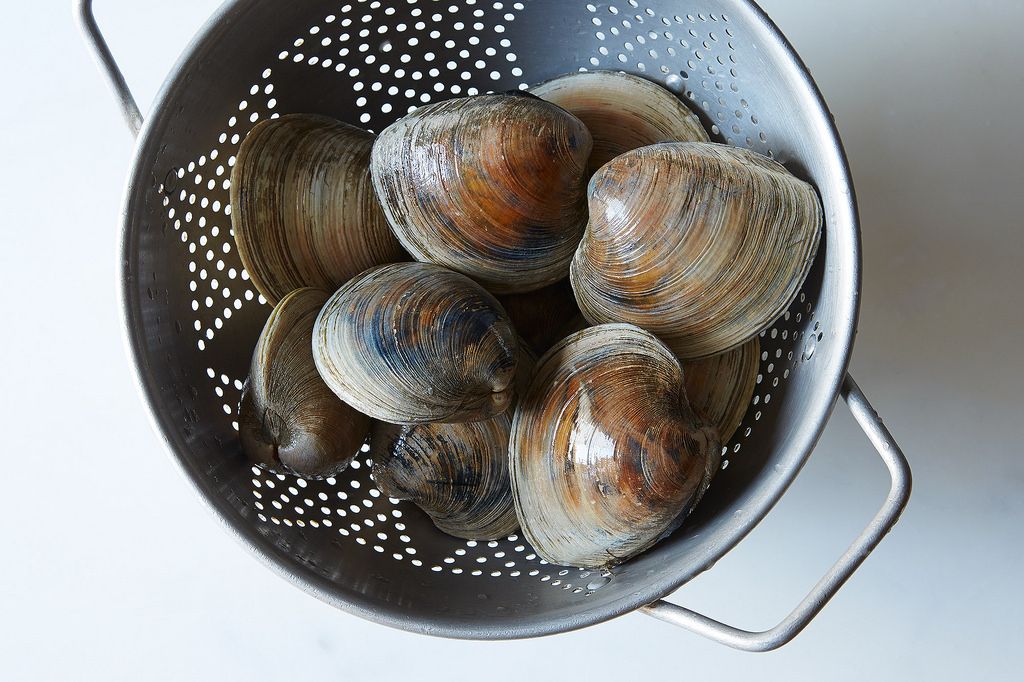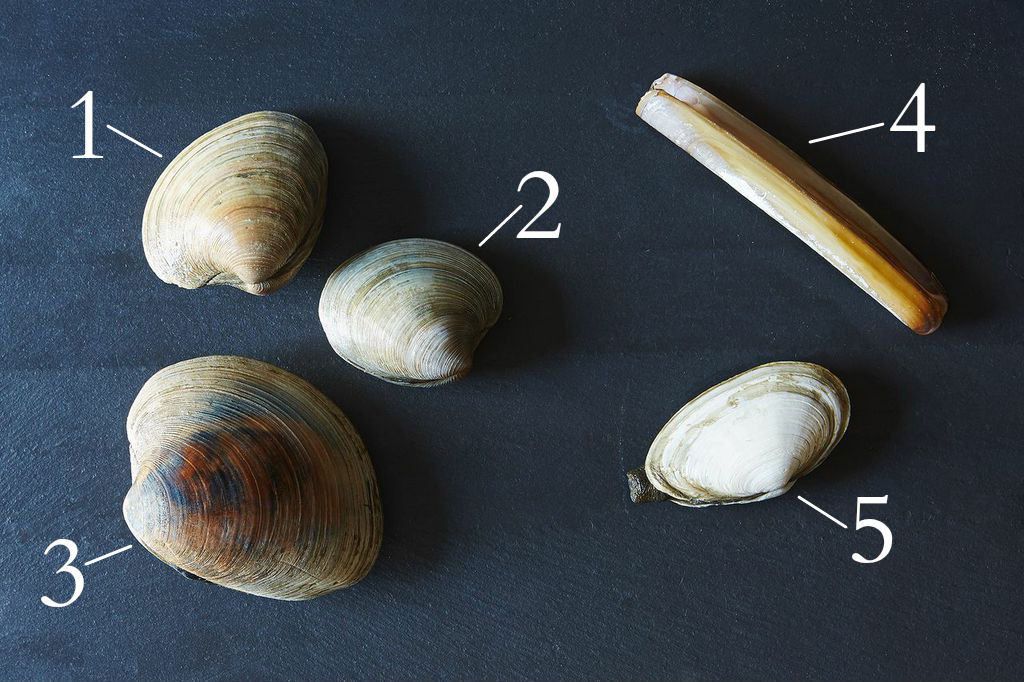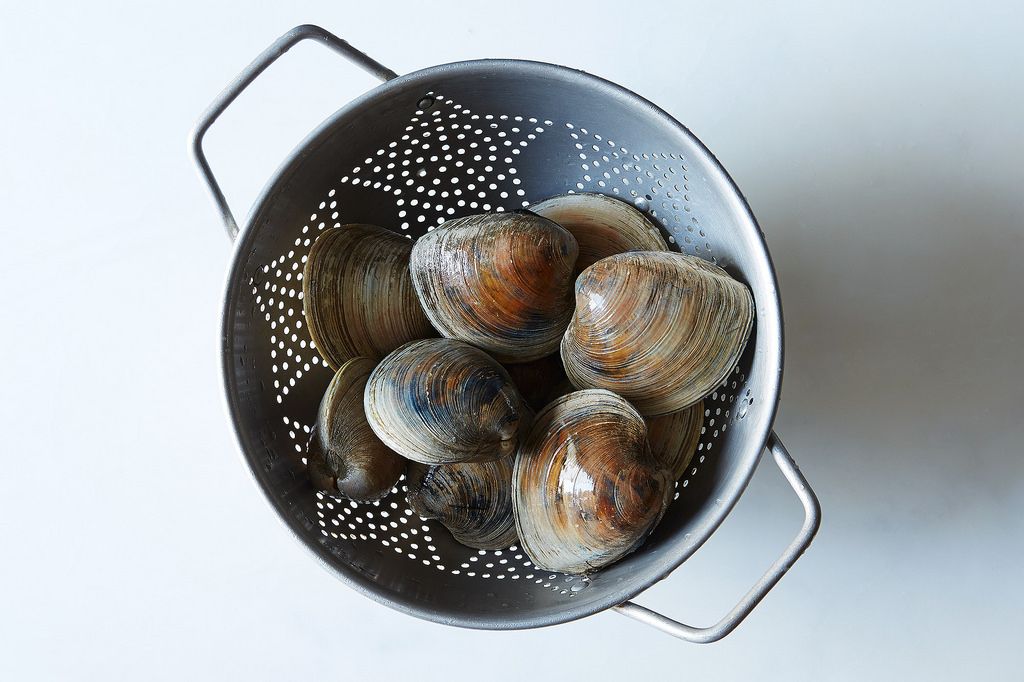This summer, Christine Burns Rudalevige of The Family Fish Project is on a mission to help us cook and eat more seafood at home.
Today: The only two clam classifications home cooks need to know -- and how to cook each type right.

I spent most of my family’s summer coastal California road trip looking for clams. Not digging for them in the waders and rake sense, but seeking them out on every menu and in every fish case I could find between San Francisco and San Diego. I wanted clues on how to map West Coast species to the East Coast clams I know well.
I found tiny Manilas and giant Pismos, elegant razors and grotesquely long-necked geoducks. There were pink, heart-shaped cockles from New Zealand and shucked Ipswich belly clams from Massachusetts.
What I learned, though, is home cooks only need to know about two basic clam classifications: soft shell and hard shell. Regardless of coastal affiliation, these bi-valves are cleaned and cooked according to the strength of their calcium carbonate exoskeletons. Within each class, the smaller ones will be tender, better eaten whole and sold alive. The bigger ones will be tougher, work better chopped in chowders, fritters and stuffed clams, and come fresh, frozen or canned.

Hard shell clams (1-3) a.k.a. (from smallest to largest) Manila clams, littleneck (2), topnecks (1), cherrystones (3), chowder clams, and quahogs like to dig into sandy beaches. Cleaning requires only a scrub with a stiff brush under running water. Smaller ones, whose shells measure less than 2 inches, can be served raw on the half shell and are good and sweet just slightly steamed in wine and aromatics. The mid-sized ones -- those between 2 and 3 inches -- can be cooked via various high-heat methods including pan-roasting, baking, and grilling.
In fact, if you are faced with a plethora of clams at the fish counter, buy a half dozen of each type, clean them and throw them on a very hot grill. Cover and check often to see which ones have popped open and are ready to eat. Try one of each naked to find your favorites and you can always dress them up later with a dab of Sriracha Lime Butter.
Soft shell clams (4-5) a.k.a. razors (4), Ipswitch clams, steamers (5), gapers, and belly clams thrive in muddy tidal flats and are harvested with quite a bit of sand in their bellies. To clean, first rinse their stark white shells in cold water a couple of times, and then let them soak for a few hours in salted water that has a good sprinkling of cornmeal in the water, which helps purge the clam bellies of grit. After a final rinse, store the clams in the fridge or on ice, but never in a plastic bag as they need to breathe. Soft-shelled clams are easily shucked to then batter and deep fry. But they are more commonly steamed at home, accompanied by their own juices or a bit of drawn butter for dipping.
More: Pick up a clam knife and get shucking.

When I make clams, I want the dish to feel more like a whole meal, so I add a cooked grain and some greens to the mix. This idea was not my own, but one I have borrowed from chefs Chad Conley (formerly of Hugo’s and Gather in Maine and Jean-Georges in New York) and Greg Mitchell (Gramercy Tavern and Reynard in New York) who man the stoves at the refurbished Palace Diner in Biddeford, Maine. They routinely mix shellfish with things like fregola sarda and bitter greens. I think I have come pretty close to recreating the clam, farro, and kale dish I ate there a couple of weeks ago. They used mahogany clams, but I run with a mix of my favorite hard shells: cherrystones and littlenecks.
More: For lunch, give your greens some grain.
Clams with Cream, Farro, and Baby Kale
Serves 4 for dinner
Olive oil
1/4 cup minced shallots
1/2 cup clam juice
2 garlic cloves, crushed
2 dozen cherrystone clams, scrubbed
1/2 cup heavy cream
Kosher salt and white pepper
2 dozen littleneck clams, scrubbed
2 cups cooked farro
2 cups washed baby kale leaves
Sea salt
Chili oil
See the full recipe (and print it and save it) here.
Photos by Mark Weinberg

Join The Sandwich Universe co-hosts (and longtime BFFs) Molly Baz and Declan Bond as they dive deep into beloved, iconic sandwiches.
Listen Now

See what other Food52 readers are saying.